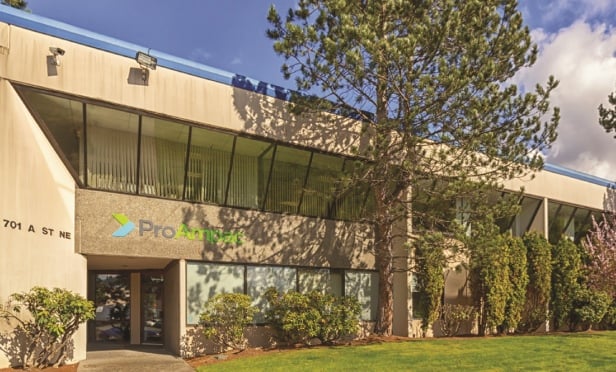BEVERLY HILLS, CA-“I characterize 2010 as schizophrenic,” said Roy March, CEO of Eastdil Secured LLC, at Allen Matkins’ third annual View From the Top. March, who served as the event’s first keynote speaker, pointed out that the “global markets are confused,” and that this year has been a “real stop-start” kind of year.
March was one of a number of speakers at the annual event whose remarks suggested that the economy, the debt markets and real estate continue to send a host of mixed signals, both good and bad―and that conditions often seem to change from month to month or week to week.
For example, March explained that from January to April, it seemed like the crisis was solved and everyone had a somewhat “bullish” outlook, like “why sell now?” May and early June rolled around and sovereign debt fears created major volatility, he said. Then in late June, all seemed like it was going to be OK.
Some current themes in the debt and equity markets, according to March, include lack of yield that has pushed spreads higher in every asset class—even with record low treasury yields; the re-emergence of CMBS, which is now positioned to grow; a market that is split into "haves" and "have-nots,"; increasing distressed asset but still not a flood; aggressive activity by public and private REITs; and sellers returning to the market.
There is still this looming maturity issue that is floating around out there, March said, but he added, “It is expected that many of these loans will get extended.” Some other conclusions or “takeaways” from March include: “We are at that stage in 2010/2011 where peak defaults will hit, leading to increased sales activity;” the tone in the debt market, has been extremely positive in the last 20 to 45 days and yields have compressed 50 to 100 bps; fundamentals are still declining, but investors anticipate a recovery over the next 12 to 24 months and are looking to buy now; trophy investors are focused on cash yields; note value and real estate value are converging; and there is a lack of quality assets on the market, which has led to a “scarcity premium.”
Next up was keynote speaker John B. Kilroy Jr., president and CEO of Kilroy Realty Corp., who provided a brief market overview and discussed how it has affected Kilroy as a company. “Leasing momentum has improved but the market remains choppy,” he explained. Demand, he said, is coming from several sectors including media, technology, healthcare, software and entertainment. As for rents, Kilroy said that they have generally stabilized buy there is no sign of rent growth yet. There is very little in the way of construction, he pointed out, and as for acquisitions, he said that “there has been a tremendous increase in volume.”
He pointed out that KRC had has a very consistent strategy over the years. “Buy when it makes sense, develop when it makes sense, and do neither when it makes sense,” he said. One of the company’s strategies is to pursue opportunities along the West Coast, targeting opportunities with characteristics such as have a value add component through lease-up and have significant amenities including access to transportation to name just a few.
In the acquisitions market, Kilroy said that the opportunities are fewer and more competitive than anticipated. “Blend and extend by lenders has limited the predicted tsunami of deals,” he said. Cap rates are ranging from 5% to 7% for quality assets and low interest rates are pushing down cap rates, he said. “Financial capacity and surety of execution are key,” he explained. “Most properties today have above-market leases if they have any leases and in some cases, buyers are under-estimating capital expenditure needs.”
Development is the other growth engine at Kilroy, he explained, pointing out that the company is focused on positioning itself for future development. “Our focus is on improving entitlements. We are currently expanding entitlements on existing land and buildings to maximize flexibility and increase value,” he said.
Kilroy’s outlook? “Expect California to be choppy,” he said. “The cyclical nature of real estate will continue. We are already seeing more availability of debt at lower costs.” Not only is it cyclical, he explained, but it is volatile. “Who knows what’s going to happen.” Like March, he expects continued competition for quality assets in the acquisitions market. “Now is the time to take advantage of opportunities,” he pointed out. “Make sure you have a good team, hope for the best and plan for the worst.”
Check back for more coverage from the Allen Matkins event.
© Touchpoint Markets, All Rights Reserved. Request academic re-use from www.copyright.com. All other uses, submit a request to [email protected]. For more inforrmation visit Asset & Logo Licensing.







